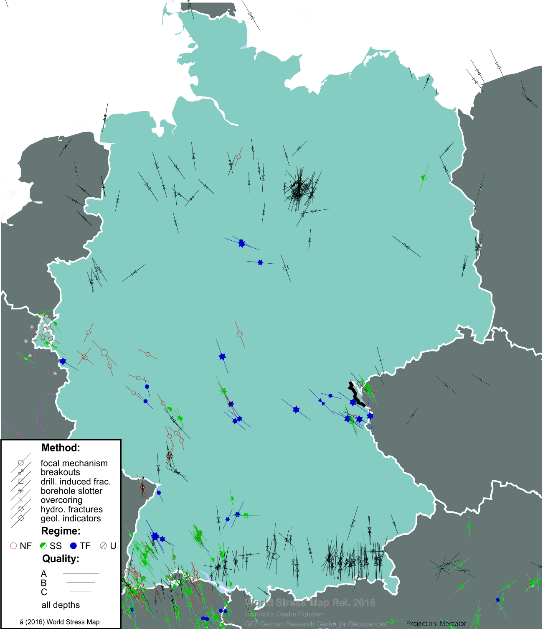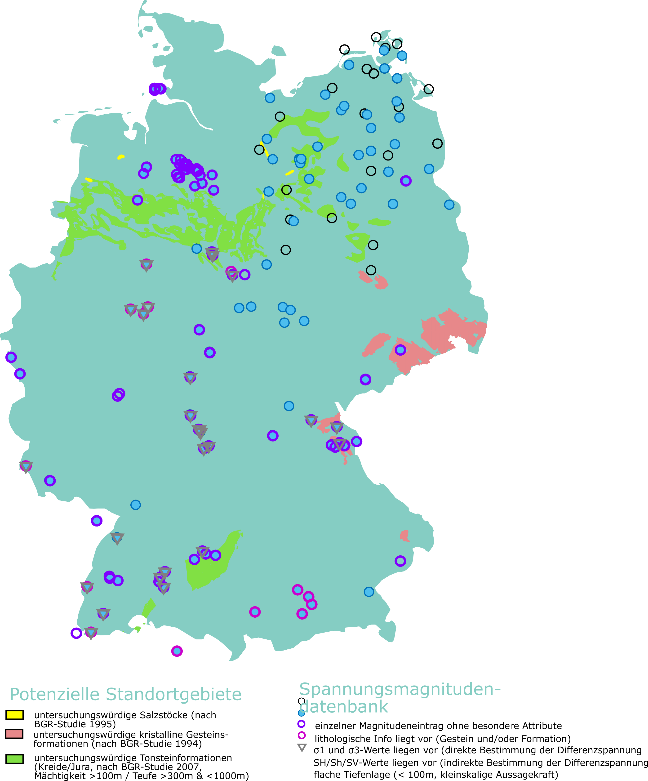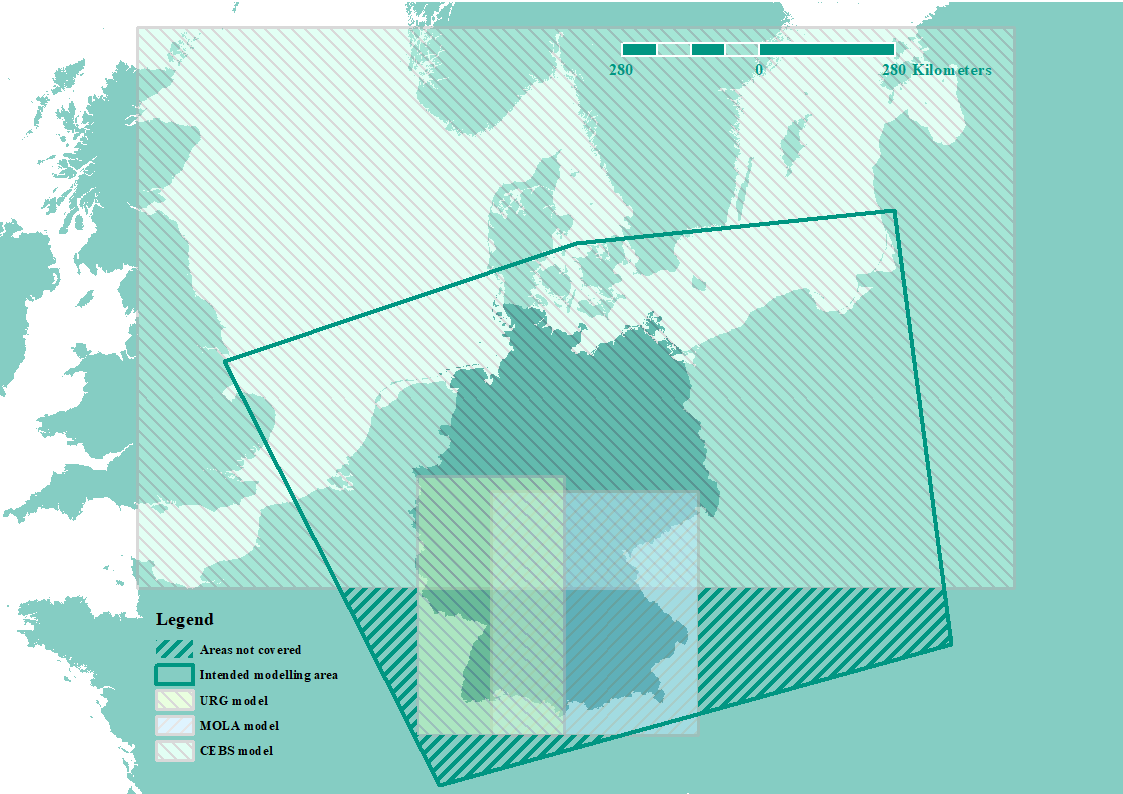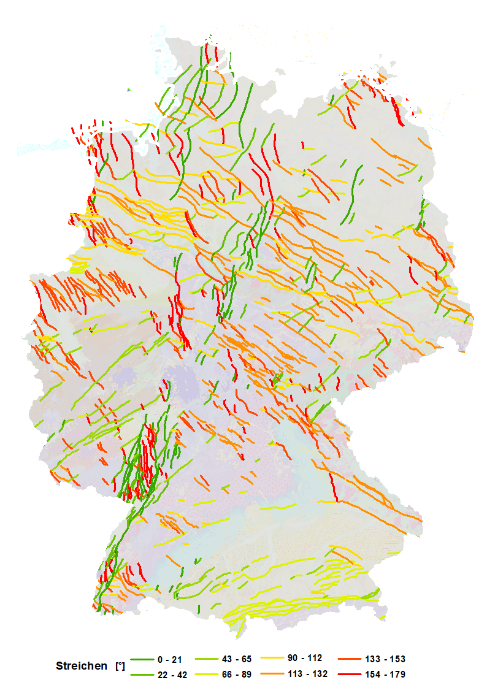 |
 |
| Fig. 1 Stress Orientation data on the left (World Stress Map) and stress magnitude data on the right (currently compiled at GFZ Potsdam) | |
Modelling works will be based on an already existing 3D model of Germany (3DD) that has kindly been provided by members of the GFZ and consists of three submodels (Fig. 2) that cover most of the planned modelling area. Units implemented in the 3DD model have to be altered to satisfy the needs of a geomechanical model for stress prediction. As stress magnitude data are sparse and mainly accumulated throughout specific horizons it is crucial to implement these units and to ensure a sufficient resolution. Areas not covered by the 3DD submodels (Fig. 2) are being added. The KIT is focusing on the underground structures in the France-Belgian area.
Furthermore, major geological structures have to be identified and implemented (Fig. 3). Therefore, information about relevant properties such as activity, displacement or depth of detachment of faults will be compiled and reviewed.
The altered and extended model will be meshed at KIT and TUDA while using stress data for calibration and allow for the prediction of stress magnitudes and orientations and areas without measured stress data.
We will also be testing the application of ApplePy, a modelling tool for quicker and automated discretization. We will compare the results of a complex, large-scale model discretized by ApplePy and a manually discretized model. A sufficient accordance between the results will be seen as evidence of the applicability of ApplePy.
 |
 |
| Fig. 2 Extend of the 3DD submodels and the planed modelling area | Fig. 3 Some major structures in Germany that are currently being revised |

